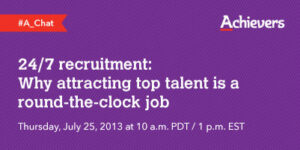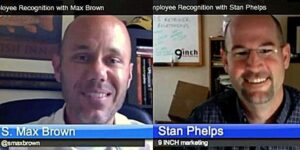
7 Proven Strategies to Reduce Employee Turnover
As 2024 begins, employers are eager to move beyond “The Great Resignation” of 2022 and last year’s subsequent “Great Gloom.” But what exactly are organizations

As 2024 begins, employers are eager to move beyond “The Great Resignation” of 2022 and last year’s subsequent “Great Gloom.” But what exactly are organizations

Productivity metrics were essential 100 years ago, during the manufacturing age. At that time, organizations measured success with metrics like hours worked, revenue per employee,

Faced with increasingly turbulent economic times, businesses are rapidly learning the importance of strong leadership. The world has had enough problems dealing with the Covid-19

Many organizational departments rely on analytics for decisions they make and strategies they implement. Through using analytics and data, these departments can get a better

How do you know if a candidate is really ready to take on a job? Testing may be the fastest path to a reliable answer.

As technology grows more integral to daily life, demand for tech-savvy talent is relentless. How can employers hire the best?

Once in awhile we come face-to-face with reminders that HR really has come a long way, baby

You don’t know you need outplacement until you really need it. However, it’s never too soon to pick a provider — here’s why.

Don’t miss the hot ticket at this year’s HR Tech Conference, as #TChat goes live with experts at a very special Employee Engagement Roundtable. Join the conversation October 7!

In today’s world of work, shift happens. The defining question for leaders is how will you make the most of those dynamics?

What’s the best compensation strategy for interns — pay or no pay? This infographic helps employers weigh pros and cons

Negative performance feedback is tricky to give and receive — but hiding the message doesn’t help. Try these 5 ideas for a more satisfying outcome

Statistics show that tapping into the flexible workforce is a smart business move. Why? This infographic illustrates 5 compelling reasons…

Flexible work: The concept is decades old, but technology and cultural changes are making alternative schedules and locations more viable. Take a closer look with #TChat

What does it take to attract top talent in today’s world of work? Save the date for a special webinar with experts from Achievers and TalentCulture!

What is an “open” leader — and why is that concept vital in the workplace? That’s our focus at #TChat forums this week, as we explore the intersection of management, learning and collaboration

What does a future-ready workforce look like? Business collaboration and learning expert Dan Pontefract says it features a special kind of leader

Small-company culture can be highly attractive to top talent. So, what can large companies do level the playing field? Try these 5 steps…

How can organizations engage employees more constructively? Start with the basics — 3 essential ways to build stronger connections

In a week devoted to workplace recognition, our community discovered an abundance of ways to express appreciation. But above all, be sure to make it meaningful.

It’s no secret that workforce recognition pays. The trick is getting recognition right. How can employers make it count? That’s the focus in the TalentCulture community at this week’s events…

What do some of the world’s most respected companies do to recognize employee performance — and why? Take a quick tour and get inspired!

HR technology innovation is on a roll, and advancements in HR self-service are staggering. But let’s not lose sight of what matters most…
We’ve talked before about how hot the theme of ‘innovation’ is. In the technology world, much of what’s filed under ‘innovation’ is related to cloud
It’s as if HR became a simultaneous cliche and pariah that’s at least earned a seat at the kiddie table. Like geeks that keep stuff